Finish Line FiberLink Sealant: Getting Rolling – by Guitar Ted

Finish Line has just released their new FiberLink sealant to the market and we have some to check out here at Riding Gravel. Now, you might be thinking, “Hey! Didn’t Finish Line have a sealant a while ago that didn’t do so well?” Yes- you would be correct if you are thinking this. But this is not THAT sealant. Finish Line realized that their previous offering wasn’t quite up to snuff, so about two years ago they started working on a new formula for tubeless tire sealant. FiberLink is that new sealant. Now let’s dive in and find out what is different here.
First off, FiberLink is a latex based sealant. That’s good because the best sealants for bicycle tires use a latex base. However; Finish Line didn’t just throw out a generic latex based sealant here. They have enhanced latex’s sealing properties by using Kevlar® fibers- thus the “fiber” in the name. Here following is a bit of information from the FiberLink webpage.
“Kevlar® fibers work synergistically with fast-acting natural latex to seal punctures as they occur. Free-flowing latex cures rapidly to create an adhesive seal which is reinforced with interlinking Kevlar fibers.“
Pro latex formula utilizes FiberLink™ Technology
• Kevlar® fibers ensure strong, long-lasting seals
• Low viscosity is ideal for race conditions
• Fast-acting natural latex reduces air loss
• Optimum longevity between refresh cycles
• Low odor and easy to setup
FiberLink sealant comes in 8 ounce squeeze bottles for $12.99, 32 ounce bottles for $34.99, and 1 gallon jugs at $110.00. All prices are USD. Finish Line FiberLink is manufactured in the U.S.A.
First Impressions: We’ve used and tested many sealants here at Riding Gravel and a couple of us have even made our own sealant. So, we are keenly aware of the nuances between various sealants. I noticed straight away that FiberLink seemed to be more viscous than many other sealants. I assume this is in conjunction with Finish Line’s claim for fast acting puncture protection in race situations where a rider cannot afford to stop to deal with helping a sealant seal a puncture. The only other sealant that compares in this way is perhaps the ubiquitous Stan’s.
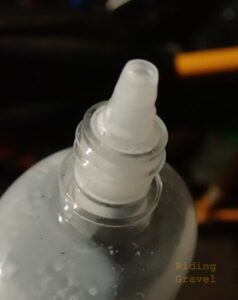
I used FiberLink to set up some WTB Riddler 700c X 45mm tires on the set of WTB CZR wheels we have on test currently. The FiberLink squeeze bottle was easy to use, but I have to say that I was a bit surprised that there was no aluminized seal of any sort on the bottle, such as you might find with other small bottles of sealant. In fact, I spilled a little sealant thinking that there was a seal I’d need to remove. And that’s another good point while I am thinking about it here- The FiberLink sealant will spill right out in dribbles if you tip the bottle any from vertical. One needs to be careful after removing the cap.
Another thing to note is that Finish Line has provided a handy “dosage” chart for different sized tires on the label of the 8 ounce bottles and also online at the webpage for this product. The recommended amount to put into my WTB Riddlers was 4 ounces, so I squeezed in a half a bottle into each tire, seated the rest of the tire, and aired them up. The FiberLink sealant seemed to take care of things from there with no further issues.
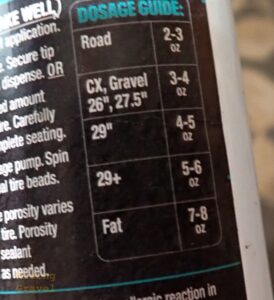
I was able to do a two-pronged test here with the Riddlers as one was a new- never mounted- tire and the other had been used before as a tubeless tire. I did this to see if there would be any difference noted in how FiberLink was able to seal up a tire casing versus one that had already seen sealant. After approximately 12 hours, I had not noted any difference in the air pressures at all, so I feel that the FiberLink does a great job of sealing up a tire’s inner casing.
So Far… Finish Line’s new FiberLink sealant is a latex based sealant that acts a lot like what you would expect. Initial set up reminds me very much of how the competition’s latex sealant formula sets up tires, and that is a good thing. FiberLink is very viscous, so it will atomize in the air as it rushes out of a valve core. I would recommend that tires be aired up with the valve stems at a 10 or 2 o’clock position to help mitigate that effect. Other than the surprise of no shipping seal on the bottle, I have seen no negatives to using the Fiberlink sealant so far.
Now it is time to ride. I’ll be back in about a month, or maybe more, with my final verdict. We will see how FiberLink holds up in a tire, plus we might get to see how it seals up a puncture, should I run across something out there that causes me a problem. Hopefully the FiberLink will be up to the task. Stay tuned for the final verdict…..
Note: Finish Line sent over the FiberLink sealant for test and review to Riding Gravel at no charge. We are not being paid, nor bribed, for this review and we will always strive to give our honest thoughts and views throughout.


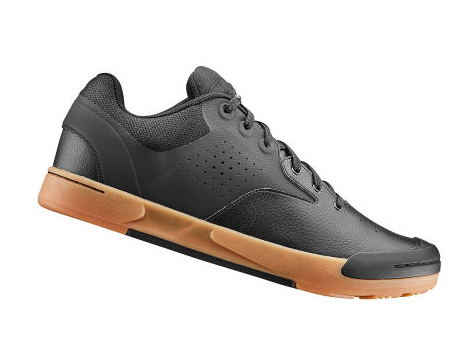
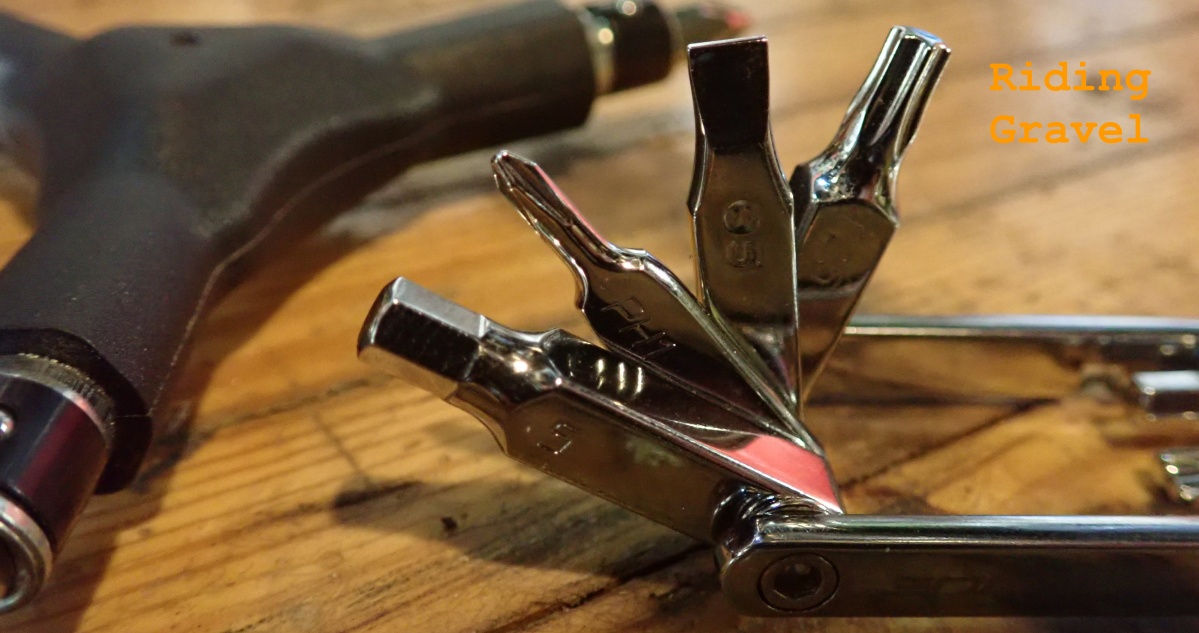
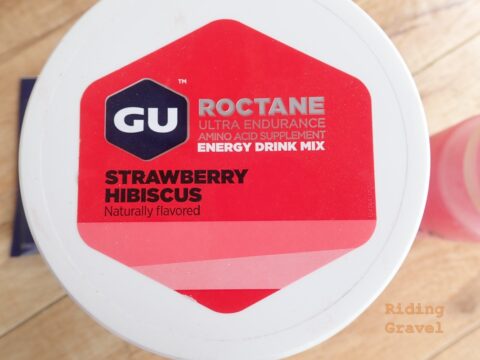
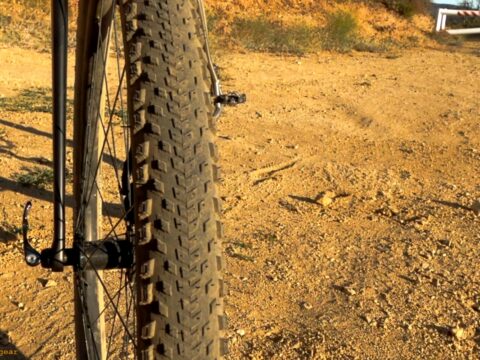
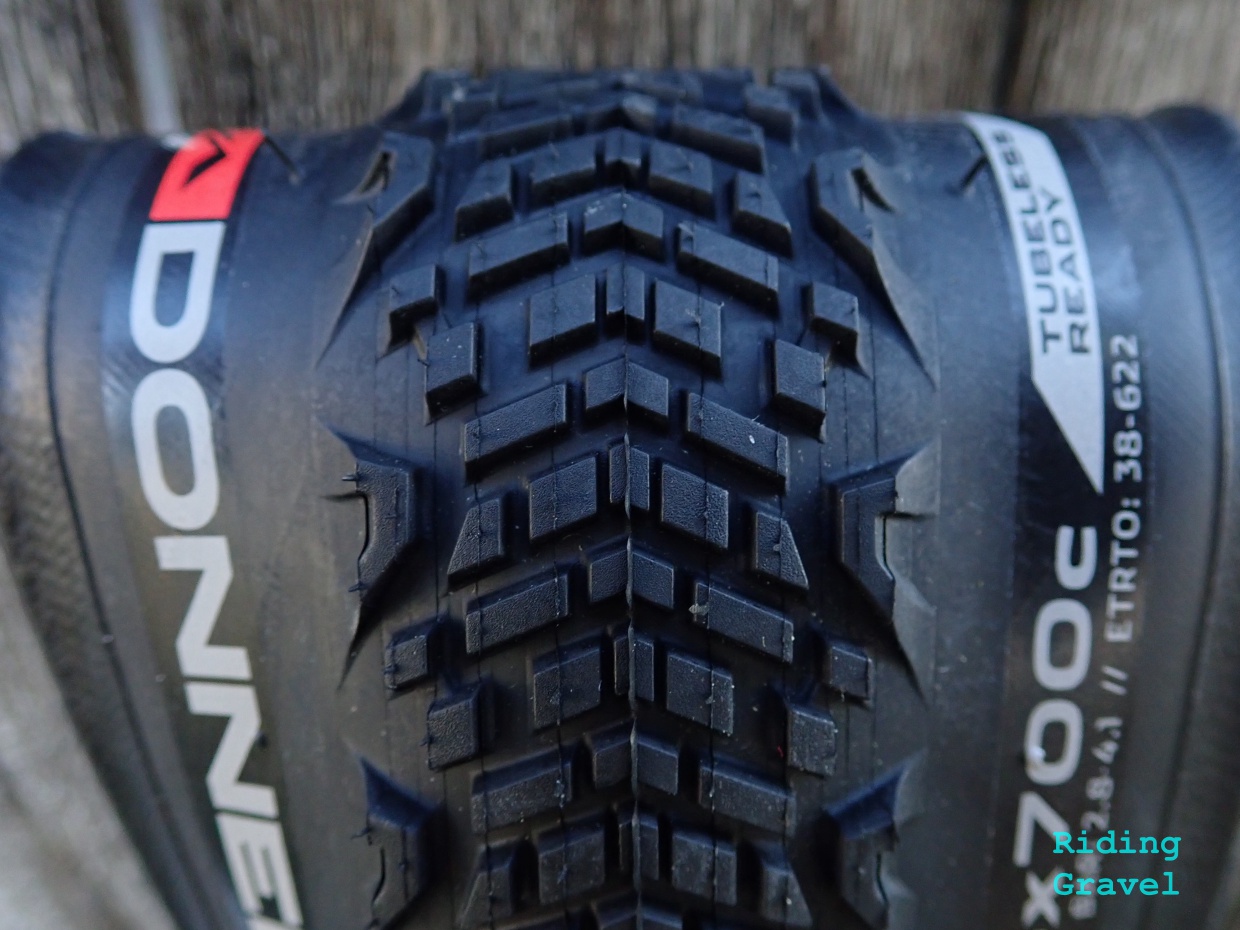
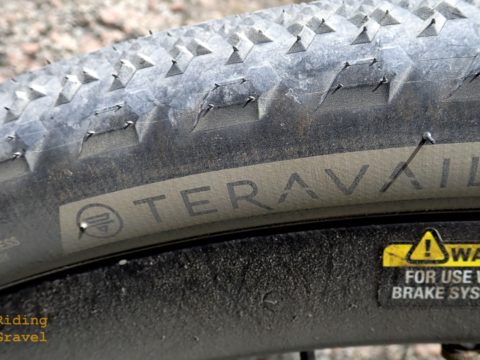
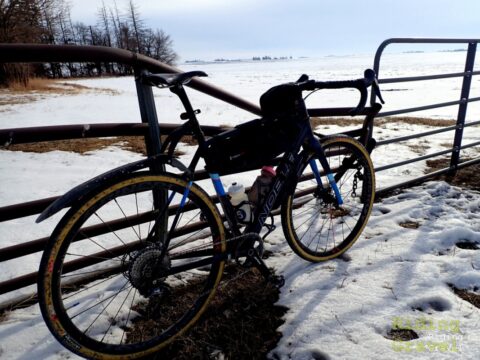
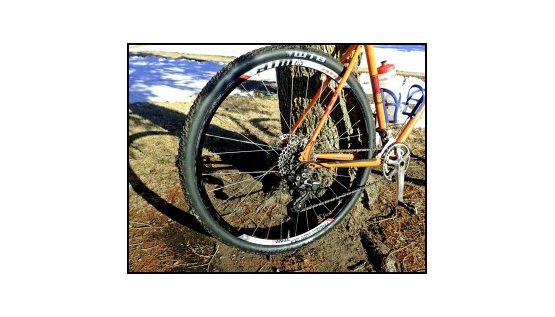
“(…) Now, you might be thinking, “Hey! Didn’t Finish Line have a sealant a while ago that didn’t do so well? (…)” –
who said that? The ‘old’ Finish Line sealant was quite good!
It has been quite a few months now – what is your summary of the new sealant from Finish Line?
ine? What experiences have you had?
Jason
@Jason – Sorry, but with so many new sealants to try when this came out, we all moved on to trying those. I thought the Finish Line was good, but most newer sealants are.